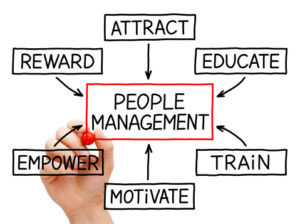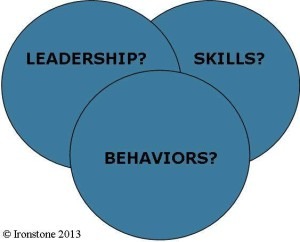 Thriving in talent management is crucial to sustain a strong foundation for your firm.
Thriving in talent management is crucial to sustain a strong foundation for your firm.
HR professionals and firm management must stay on top of new trends to prevent disengaged employees and costly turnover. Consider some of the latest trends in winning the war on talent management.
“Only 41% of firms are confident their human capital strategy is truly embedded in their organizations’ strategy”, as reported in research provided by Charted Global Management Accountant, CGMA. The battle at hand in the war on talent management lies in the ownership of who drives talent strategy. Is it human resources, marketing, finance or operations? The struggle and outcome are dependent on which department owns the talent agenda.
…………………………………………………………
Hiring For The Future
Growing your firm requires securing great team members from the beginning. Hiring high-quality talent gets your business off the ground and builds the foundation for future success.
In addition to hiring exceptional talent, employers are trending towards incorporating in-house skill development. According to CareerBuilder’s 2013 Hiring Forecast, 39% of employers plan to hire employees for positions within their organizations and train them for the skills required in their particular industry.
When businesses need to fill a role, they typically start with an external search. The gap in plunging forward to external resources is found when internal employees are the closest source of talent. Internal team members are familiar with the existing firm culture, the business, clients and existing team members. Studies have shown internally hired employees reach competency in a new role 50% faster than external hires.
Talent Matching
Hiring managers don’t have the time required to sort through employee talent profiles and candidate resumes in order to find the perfect fit. Talent matching, also referred to as candidate assessments, is a critical tool filtering system, sending the top-matching candidates to the surface. Use of these systems will reduce time spent in decision making and reveal the best candidate based on multiple levels such as skill, knowledge, overall abilities and personality type.
perfect fit. Talent matching, also referred to as candidate assessments, is a critical tool filtering system, sending the top-matching candidates to the surface. Use of these systems will reduce time spent in decision making and reveal the best candidate based on multiple levels such as skill, knowledge, overall abilities and personality type.
Talent assessments help predict a new hire’s on-the-job performance and retainability, so, in theory, applicants that pass the screening test should perform better as employees if they are hired.
In addition to aiding in your hiring process, talent matching (candidate/employee profiles) will assist you in:
- Team development
- Leadership management
- Communication
- Identifying the strengths/limitations of potential candidates
- Training
Learn more about the candidate/employee profile assessments Ironstone has available.>>>> Read more.
“I believe every person is born with talent.”
-Maya Angelou
(1928-) Celebrated Poet, Educator, Civil Rights Activist
Things are very different in today’s organizations. Every leader now has to acknowledge that employees are actually of the utmost importance in the organizations pursuit of its goals.
…………………………………………………………
Compensation – More Than $ Signs
Compensation trends in 2014 will more than likely flat line with the trends of 2013. Slight increases across the board may be prevalent depending on where our job market lands by mid-year. Research provided by Business and Legal Resources, (BLR), and the Society for Human Resource Management, (SHRM), shows that 27.5% of employers plan to offer merit increases of 2.5% to 5%. SHRM reported information from Ashton Solutions, recounting a recommendation to increase budget ranges between 2.5% and 3.5%, depending on the industry and level of position.
Businesses are trending towards identifying “indispensable positions” versus other positions not considered “mission critical”. With that being said, firms should establish market driven compensation budgets based on current supply and demand.
Salary doesn’t stand alone in the compensation arena. Many businesses are engaging in and developing additional programs in an effort to attract and retain high-quality employees. Integration of leadership and skill development top the list of compensation add-ons; other programs being considered by top hiring managers are incorporating budget allowances to reward top performers rather than the old school approach of passing along equivalent increases to all team members.
…………………………………………………………
Hire & Retain Employees Through Job Descriptions
Filling positions within your firm is a basic yet vital task. One of the most commonly overlooked links in employee retention is the relationship between an employee and their job description.
Written summaries detailing responsibilities and tasks ensure applicants and employees understand their role and what they need to do to accomplish each assignment.
Creating a direct relationship between a job description and your team members will result in employee ownership, accountability and engagement. When team members claim these traits, employee retention is increased.
A job description needs to provide a positive impact fostering consistency and clarity for everyone involved. Creating, reviewing and updating job descriptions should be included in your overall business strategy.
Using Job Descriptions as a Multifaceted Management
Although job descriptions are utilized as a valuable hiring tool, a well-crafted job description should be used as a communication tool and a means to review other workplace functions such as:
- Performance management
- Training and team development
- Salary
- Incentive Plans
- Discipline
Leading HR managers are creating innovative ways to engage team members in fulfilling the duties assigned in job descriptions. Consider this suggestion as explained in John Flaherty’s book, Peter Drucker, Shaping the Managerial Mind.
Drucker suggests holding employees accountable for their future contributions by using the manager’s letter. He adds, “Setting objectives is so important that some of the most effective managers I know go one step further. They have each of their subordinates write a “manager’s letter” twice a year. In this letter to his superior, each team member follows these steps:
- Define the objectives of their role in the firm
- Identify the performance standards that he believes are being applied to this position
- List the tactics and strategies to be done in order to attain these goals along with identifying potential obstacles
- Identify tangible and intangible occurrences the business does to help succeed and the occurrences that hinder
- Outline a proposal of steps to be taken during the next year to reach each goal
If his superior accepts this statement, the “manager’s letter” becomes the charter under which the manager operates.”
By following Drucker’s suggestion, you will have an employee who clearly understands their role and responsibilities and is accountable for their contribution to the overall success of your firm.
…………………………………………………………
Water Fountain Gossip + Your Incentive Plan =
Level of Employee Loyalty
Incentive plans can become a “touchy” subject; therefore, clear communication is vital to avoid “water-fountain gossip”.
Your incentive plan is a vital component within your salary package; the two are linked together as a whole. Business leaders and HR managers tend to forget the importance of communicating the link between the two components to team members. Bonuses should be addressed as a component of your overall compensation package.
Limited only by your imagination are the numerous ways to incorporate incentives. Bonus structures should be tied to measurable and achievable goals which are in direct alignment with the overall goals of your firm. Clearly communicating your bonus structure will result in higher levels of employee engagement, motivation and success.
Most business owners are in denial when it comes to what employees want and what it takes to retain them. A new study by MetLife found that employee loyalty has dropped steadily since 2008, but employers mistakenly believe it is on the rise. Solution – give employees what they really want. Determine incentives and benefits to engage your team by incorporating their desires within your incentive plan. Forward thinking firms are engaging in:
- Health and Wellness Programs
- Savings Incentive Matches
- Paid Time Off
- Flexible Work Schedules
- Fun Factors
Complex programs don’t work. Your bonus and incentive plan needs to be easy for everyone to understand. The key for a workable plan is to keep it simple and achievable.
…………………………………………………………
Performance Reviews – Scrap Them!
Would it behoove you to consider throwing out performance reviews altogether with a replacement plan that will create actual results?
In lieu of the dreaded annual performance review, Procter & Gamble utilizes what they refer to as the Work and Development Plan.
The format lays out the work to be achieved in the upcoming year, how it links to the business plan, the strategies and timing for success and expected results.
Trending HR professionals are turning their backs on annual performance reviews, replacing them with a process of ongoing assessments and feedback. In regards to annual performance appraisals, Fred Nickols, a senior consultant with The Distance Consulting Company says, “But today, with the widespread emphasis on teamwork, shared leadership, and an ongoing struggle to find and retain qualified employees, it’s a model that is falling increasingly out of favor.”
A recent survey conducted jointly by the SHRM and Personnel Decisions International cited 32% of HR professionals are unsatisfied with their current employee review platform. Deficiencies in leadership development, coaching, 360-degree feedback and development planning were among the leading gaps in existing plans.
Scrapping your performance review plan by adopting an improved performance management system aligns the needs of your firm with the needs of your team members. The results, time spent wisely by managing team members rather than managing an annual flow of paper.
“I haven’t failed; I just found 10,000 ways that don’t work.”
−Thomas Edison
(1847-1931) American Inventor & Businessman
(Also attributed to Albert Einstein and Benjamin Franklin;
whoever coined the phrase, I’m sure they all had this positive attitude.)
…………………………………………………………
IN CONCLUSION
The top five priorities in claiming a “win” on the war on talent management include*:
- Performance management
- Workforce planning
- Talent analytics
- Training
- Development
*source shl
The priority list confirms organizations are trending towards engaging their existing workforce and developing leaders and team members from the inside.
“Surround yourself with the best people you can find, delegate authority, and don’t interfere as long as the policy you’ve decided upon is being carried out.”
–Ronald Reagan
(1911-2004) 40th President/United States of America
Question: What challenges are you facing in talent management?
Share with us by leaving us a comment here!
Photo credit ©iStock/Getty Images/Thinkstock
- Email us at Office@IronstoneHQ.com
- Call our office at 800-917-8020
- Connect with us: